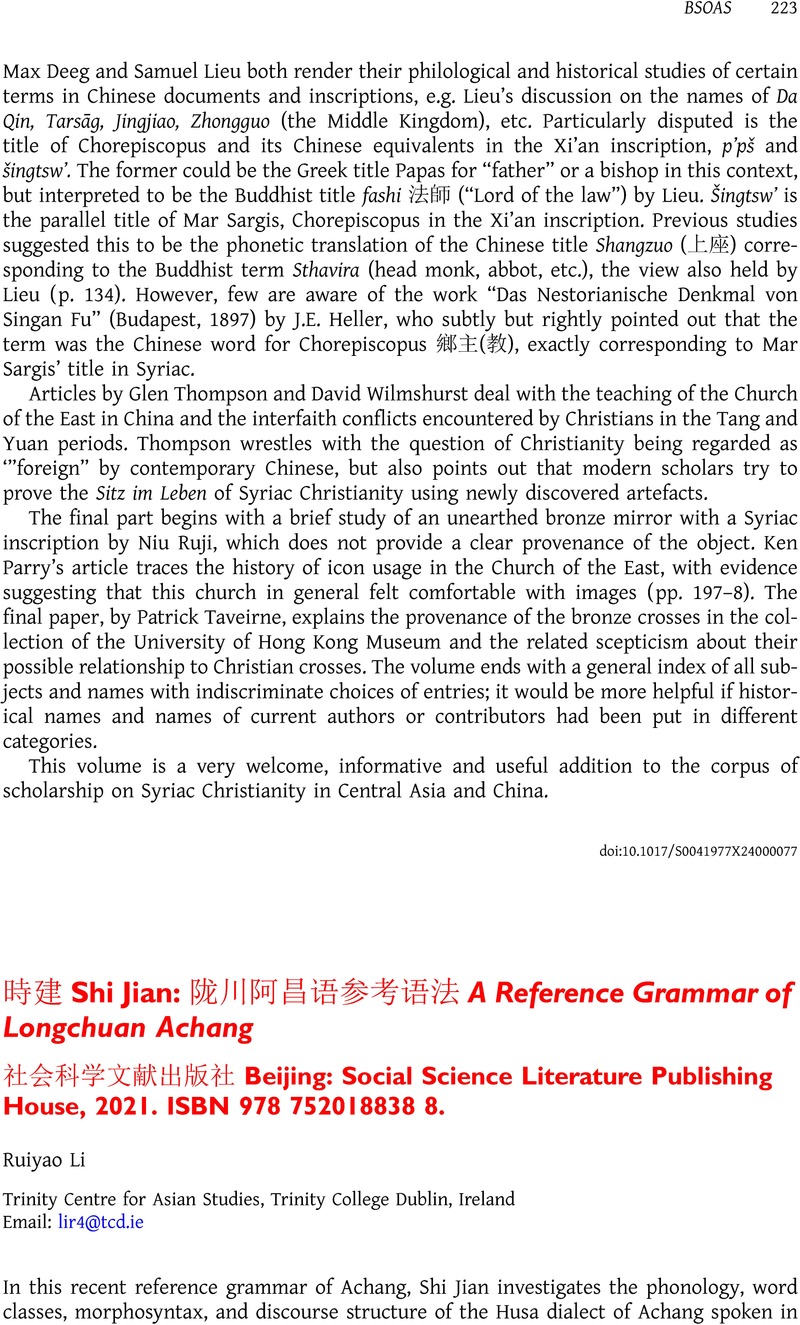No CrossRef data available.
Article contents
時建 Shi Jian: 陇川阿昌语参考语法 A Reference Grammar of Longchuan Achang 社会科学文献出版社 Beijing: Social Science Literature Publishing House, 2021. ISBN 978 752018838 8.
Review products
時建 Shi Jian: 陇川阿昌语参考语法 A Reference Grammar of Longchuan Achang 社会科学文献出版社 Beijing: Social Science Literature Publishing House, 2021. ISBN 978 752018838 8.
Published online by Cambridge University Press: 28 February 2024
Abstract
An abstract is not available for this content so a preview has been provided. Please use the Get access link above for information on how to access this content.

- Type
- Reviews
- Information
- Copyright
- Copyright © The Author(s), 2024. Published by Cambridge University Press on behalf of SOAS University of London



